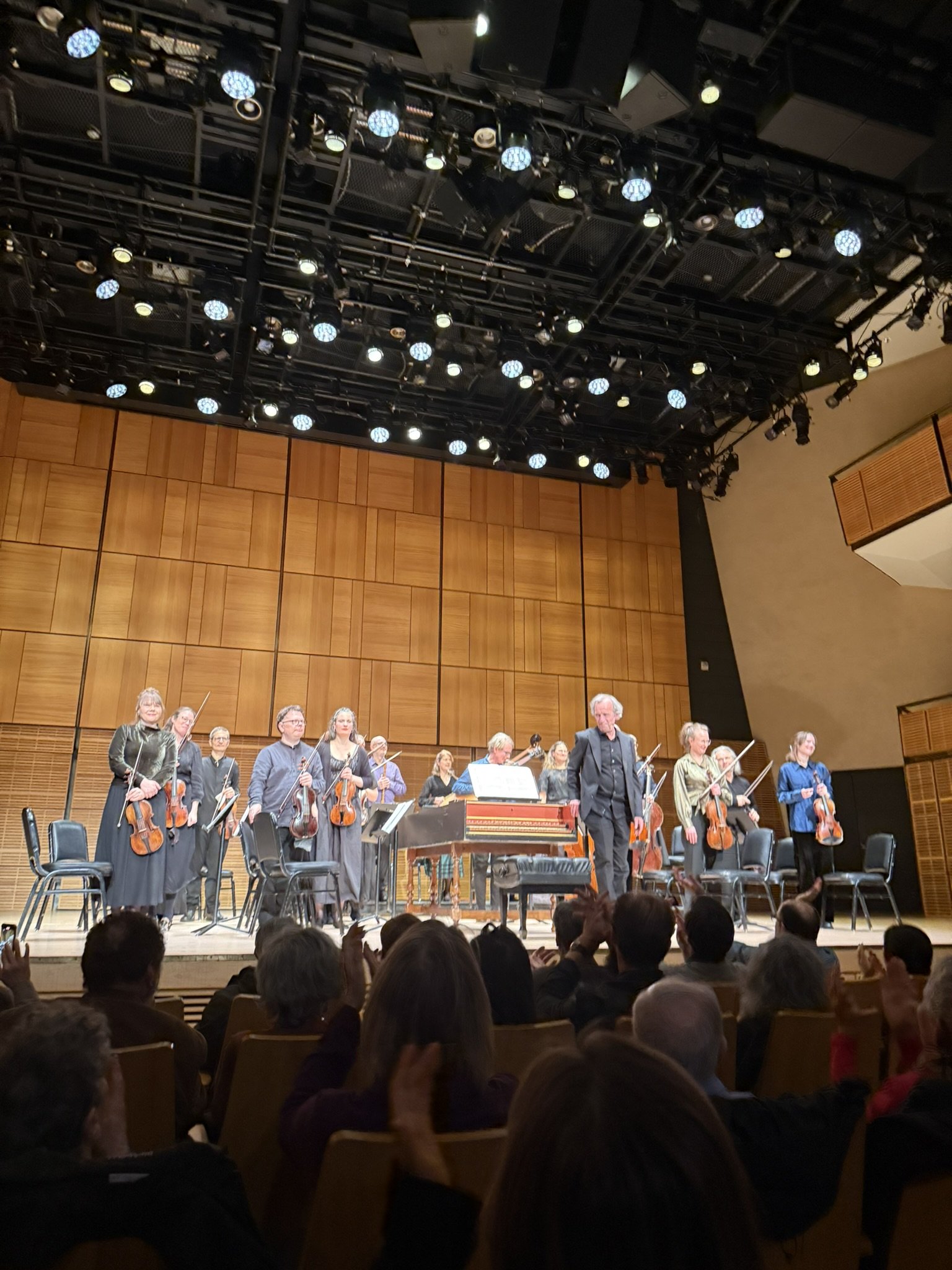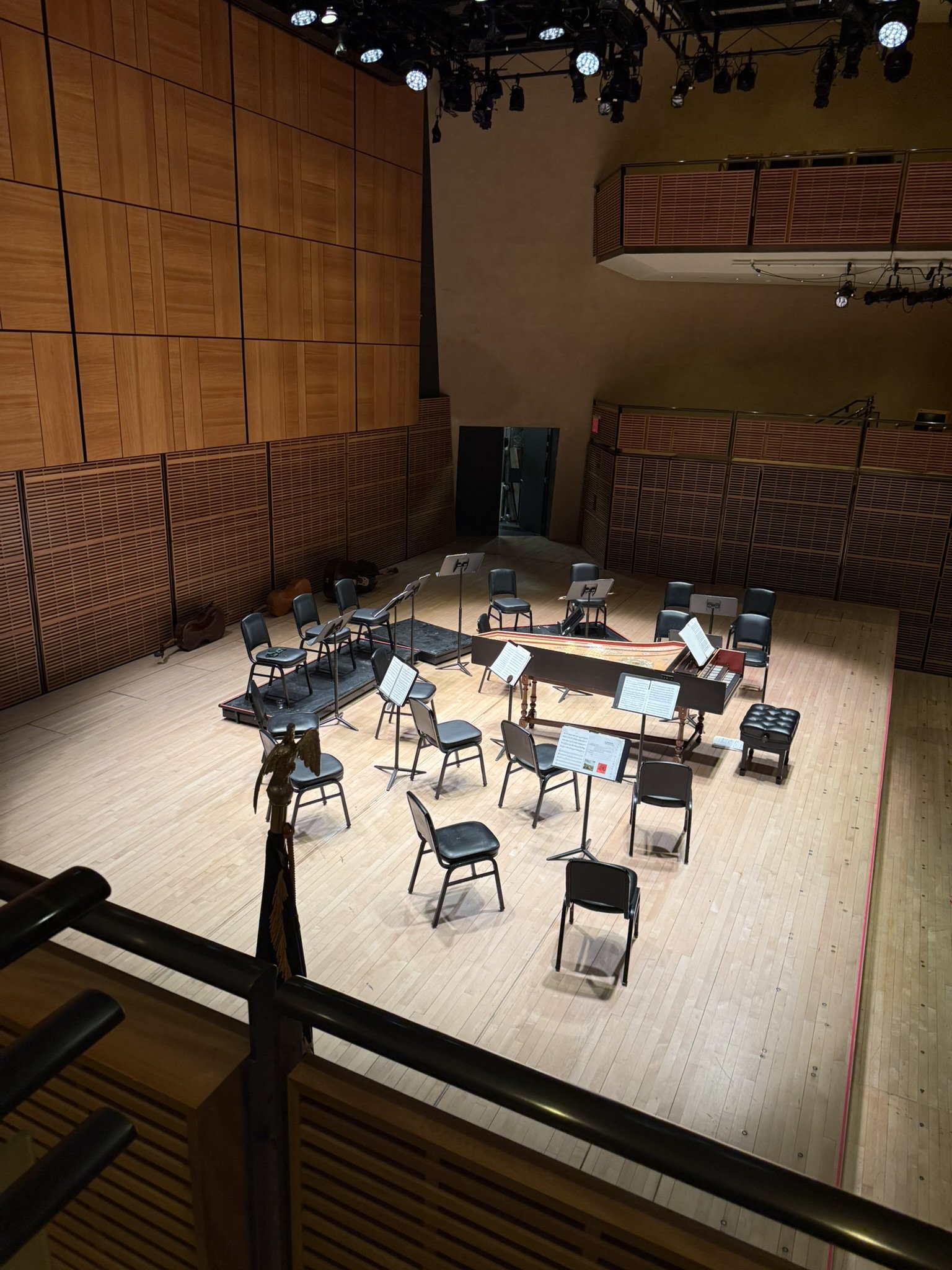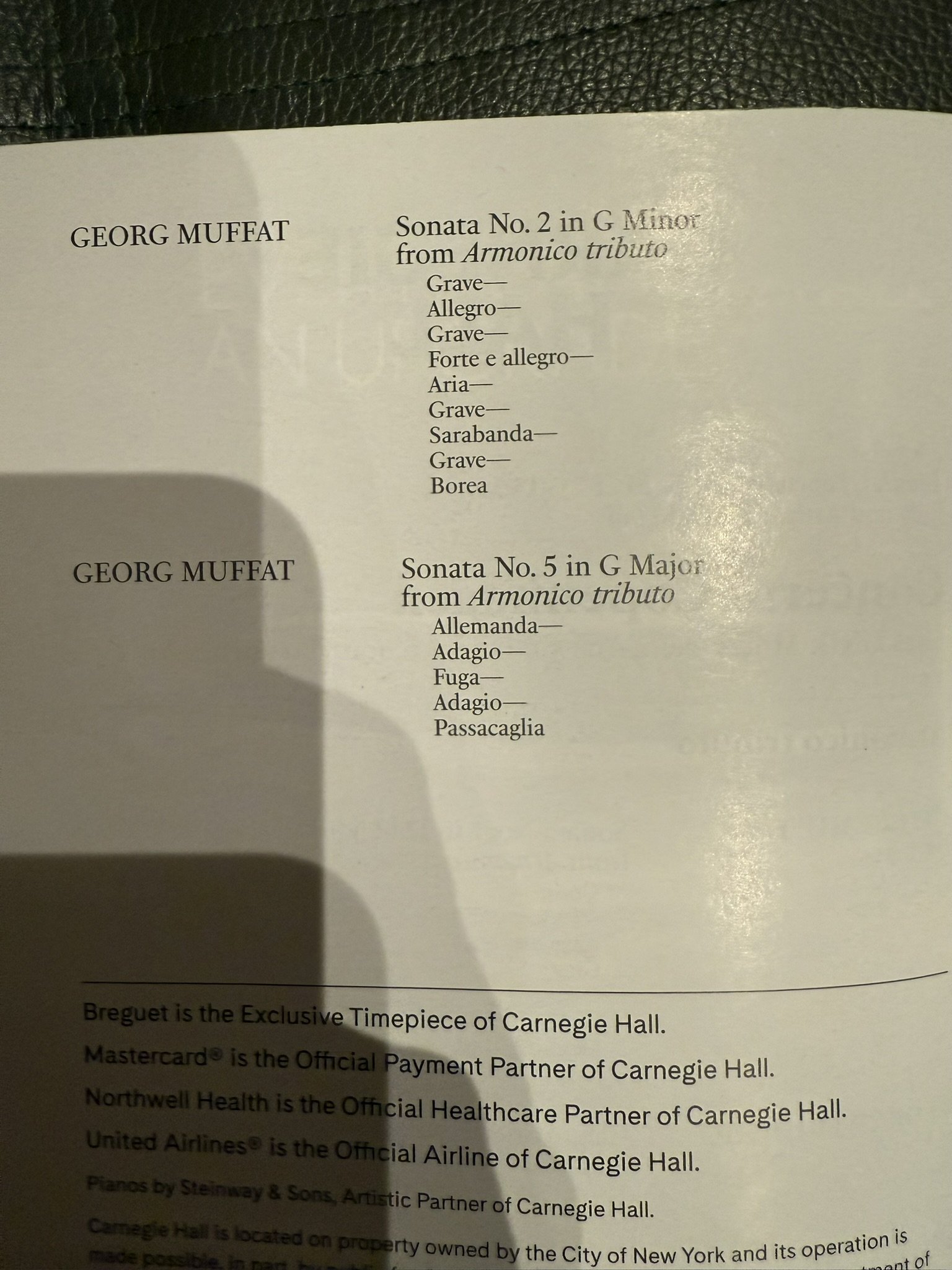Scandinavian trouvères came to New York with a piece that had never been heard before on February 25 at Zankel Hall, Carnegie Hall. Concerto Copenhagen, a baroque ensemble that has been transmitting living ensemble for over 30 years, and its music director Lars Ulrik Mortensen performed Muffat's Armonico Tribute, a fusion of German, French and Italian music for the hope of harmony and peace among people, and Handel and Bach, which were influenced by, as if it were freshly baked bread. It was a joyful and sorrowful thing that arose in people's lives, so much so that it made one ask, "What is history?" The program began with Muffat's Armonico Tribute, published in 1682, who was born in France and loved Germany. The customs of the time are beautifully harmonized (armonico) across borders. It begins with Grave, the sounds slowly overlap with suspensions as Muffat explores all directions, then proceeds from the German dance, Allemande to the Grave, Chaos again with a sense of tension, and after other dances played, ending with a minuet. Next Handel's Allegro and Passacaglia, published in 1734, had a shorter suspension than Muffat and a fuller string ensemble and melody line. The Passacaglia sounded like a variation of Muffat's Allemande. Through a German musician,
Handel, I felt the international sensibility that Muffat experienced at the time, the fusion of Italian lyricism and French elegance. Then, Bach's Orchestral Suite No. 1, which was written in the early 1700s, when he wrote many instrumental pieces, consists of seven sections, just like Muffat's Armonico No. 1. Seven players surround the harpsichord. It was the most miniature unit I have ever seen, but the wild oboes and the concerto with the strings were row like a breakdance battle. The gavotta was more thrilling, and the oboe duet with the bassoon obbligato in Gavotta II was incredibly full of stories, the smell of people, the smiles, the flesh dancing that I felt as music is a small pleasure rooted in people's lives, and I wanted to drink beer. "Music must be captivating through the dynamics that take place here now," Mortensen said, and the players empathized with his gestures, unfolding the music freely and lively. Muffat's No. 2 has nine sections, the opening Grave was more complex than No. 1, and the suspension was more dynamic with a fermata (Italian for bus stop). In the fast passages, each instrument plays together with a mellow legato with tenuto, and from various dance music to an aria that imitates human singing. In No. 2, the Grave was played 4 times. I enjoyed the Copenhagen sound the most there, then realized Muffatto's application of the medieval church mode (Gregorian mode). This idea of a fixed scale is called a series and has been used extensively in the 20th century to eliminate the hierarchy of sound. The last piece, No. 5, began with an allemande, that reminded me of Bach's overture opening that had just been heard. Their quiet nobility of the embellishment, spontaneous and unselfish ensemble, arose a sense of the European internationalization towards the height of the Baroque era, and Mortensen's intuition that it is best to stick to what you truly believe in, and his empathy with the Copenhagen players were imprinted on the listeners ' DNA.
北欧のトルヴェールがニューヨークにやって来て、2月25日、カーネギーホールのザンケルホールでこれまで聴いたことのない作品を披露した。30年以上活きた音楽を伝え続けているバロックアンサンブル、コンチェルト・コペンハーゲンと音楽監督のラース・ウルリク・モーテンセンはムファットが人々の調和と平和の希望のため、ドイツ、フランス、イタリア音楽を融合したアルモニコ・トリビュートとその影響を受けたヘンデルとバッハをまるで焼き立てのパンのように奏でた。それは歴史って何?と問いたいくらい人々の生活に根差した人間の内側から生まれる喜怒哀楽を楽しく演奏していた。プログラムはフランス生まれでドイツが大好きだったムファットの1682年に出版されたアルモニコ・トリビュートから始まった。当時の風俗が国境を越え見事に調和(アルモニコ)活きた音楽。それはグラーベから始まり、ムファットがあらゆる方向を模索するようにサスペンションを伴いゆっくりと音が重なっていく。そして、ドイツ舞曲、アレマンドから再びグラーベの混沌へ独特の緊張感をもって進み、他の舞曲も演奏され1分ほどのメヌエットで終わる。次は1734年に出版されたヘンデルのアレグロとパッサカリで、ムファットよりもサスペンションが短く弦楽合奏やメロディラインはより充実している。パッサカリはムファットのアレマンドの変奏に聴こえた。当時、ムファットが体験した国際感覚、イタリアのリリシズムとフランスの優雅なハーモニーの融合をドイツ人のヘンデルを通じて感じた。そして、バッハが器楽曲を多く書いていた1700年初頭のものとされている管弦楽組曲の1番。ムファットのアルモニコの1番同様7セクションから成る。ハープシコードの周りを7人の奏者が囲む。今まで見た編成で一番小さいがオーボエのワイルドな掛け合いと弦楽器との協奏はまるでブレイクダンスのバトルのような生々しい演奏だった。ガボットはよりスリルがあり、ガボットIIのファゴットのオブリガートが付いたオーボエのデュエットは特にストーリーに溢れていて、人の匂い、笑顔、肉が踊る躍動。音楽が人々の生活に根差したささやかな楽しみだと感じビールが飲みたくなった。「音楽は今ここで行われるダイナミクスを通じて魅了されなければならない」と語るモーテンセンの身振りに奏者たちは共感し自由奔放に活きた音楽を繰り広げていく。ムファットの2番は9つのセクションで、冒頭のグラーベは1番より複雑な音色がじっくり加わりサスペンションはフェルマータ(イタリア語でバス停、立ち止まる)でよりダイナミック。早いパッセージはテヌートの効いたまろやかなレガートでそれそれの楽器が協奏し、さまざまなダンス音楽から人の歌唱を模倣したアリアへ。この2番ではグラーベが4回演奏されコペンハーゲン独特の音色を楽しんだ。そして、これはムファットが中世の教会旋法(gregorian mode)を応用したものと気が付いた。この定旋律のアイディアはセリー(série)と呼ばれ20世紀に音のハイラルキーを排除するためよく用いられている。最後の5番はアレマンドで始まり、先ほど演奏されたバッハのオーバーチュアの冒頭が聴こえてきた。コペンハーゲンの静かな装飾の気高さ、自発的で利他的なアンサンブルは、バロック時代の絶頂期に向かうヨーロッパの国際化の感覚を呼び起こし、自分が本当に信じるものを貫くのが最善であるというモーテンセンの直感、そしてコペンハーゲン奏者への共感は聴き手のDNAに刻み込まれた。
2.25.2025
Lars Ulrik Mortensen, Artistic Director and Harpsichord
Program
MUFFAT Sonata for Strings and Basso Continuo No. 1 in D Major from Armonico tributo
HANDEL Selections from Concerto in G Major, HWV 399
J. S. BACH Orchestral Suite No. 1
MUFFAT Sonata for Strings and Basso Continuo No. 2 in G Minor from Armonico tributo
MUFFAT Sonata for Strings and Basso Continuo No. 5 in G Major from Armonico tribute
Bach’s Overture setting
Muffat’s Armonico Toribute setting





